There is nothing nicer for the human eye, like a riot of greenery surrounding it. The tenderness of spring leaves, the richness of summer grass, the dying colors of autumn and the severity of coniferous forests covered with snow cover leave no one indifferent. Therefore, stones that have a green color are perceived by people as bearing peace, creating harmony and providing comfort and safety.
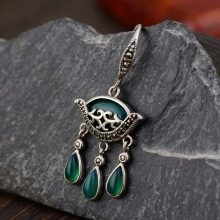
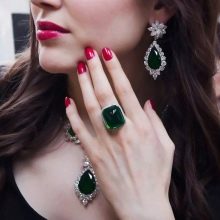
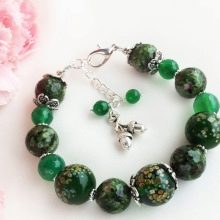
Features
Products made from green minerals are most attractive to people, since the color is pleasant to the eyes and is calmly perceived by the nervous system without causing irritation. A person wearing a jewelry with a green pebble is perceived by others as rich and generous, akin to Mother Earth. The green color of the stones also has a calming effect on the cardiovascular system and relieves psychological stress.
The wise men also love green stone, as it provides clarity of thought, giving the wearer wisdom and ability to make the right decisions.


Varieties and their description
There are precious, semiprecious and ornamental varieties of stone.

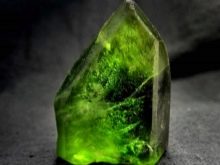
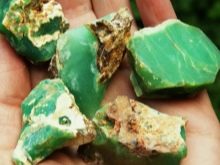
Precious
Of the green gemstones most famous emeraldwhose outdated name is "smaragd." This stone is called because of the radiance inherent in it. A characteristic feature of an emerald is its transparency and depth of tone. The most valuable stones have an even saturated color.
A completely transparent, defect-free, thick-colored stone weighing more than 5 carats costs more than a diamond.
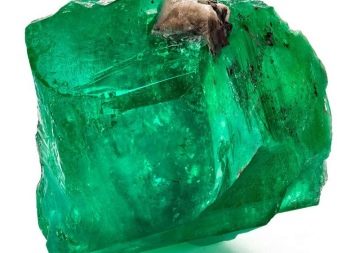
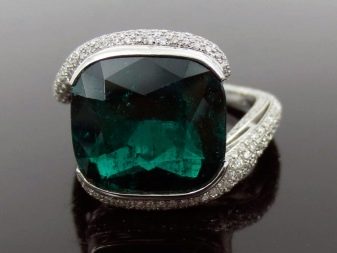
Green diamond It is extremely rare in nature. Its unique color is due to natural radioactivity. The most famous natural green diamond is located in Dresden.The pear-shaped crystal is apple-green in color.
The diamond weighs 41 carats, and at cost the stone is equal to the construction of the entire Dresden Cathedral.
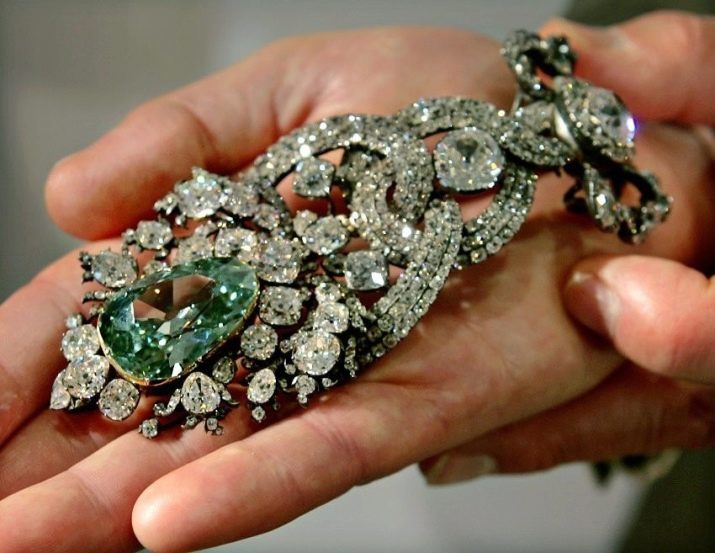
Among sapphires, so named for the blue color, there are specimens painted in green tones. This shade gives the transparent stone iron without an admixture of titanium. Sapphire is an aluminum oxide with impurities of titanium, iron, chromium and vanadium.
“Star” sapphires are considered especially valuable when a multi-ray star is visible in the depths of the stone.
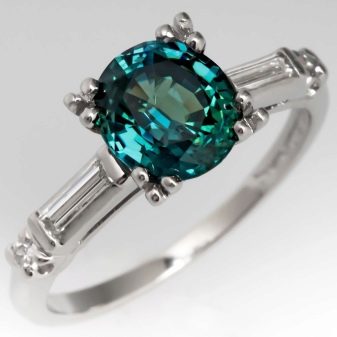
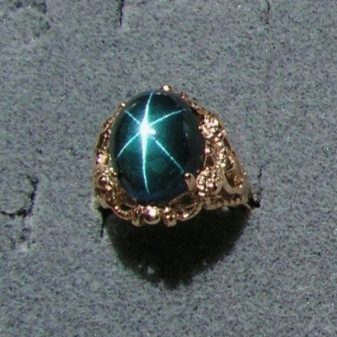
Noble beryl, a relative of the emerald, is painted in apple green color. A transparent crystal has a glass luster and refers to fragile minerals with imperfect cleavage.

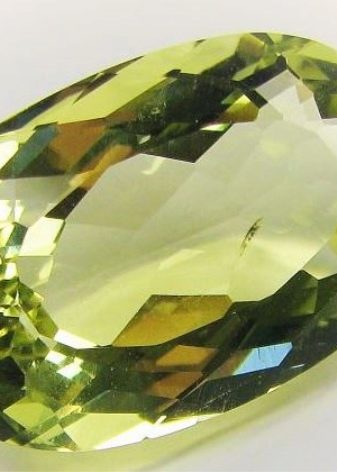
Aquamarine bluish-green or green-blue color resembles sea water. The long hexagonal prisms of aquamarine have a strong glass luster and are filled with various impregnations that can give the effect of a cat's eye, a star or in the shape of snowflakes. Because of the tenderness of the color of aquamarine, precious stones began to be attributed only at the end of the 18th century with the advent of the Rococo style. And the opening of a new diamond cut made it possible to reveal all the beauty of an ice stone.
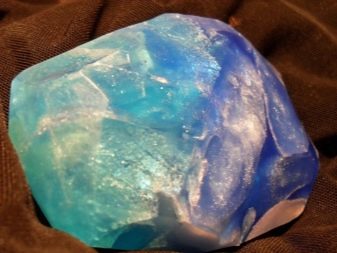
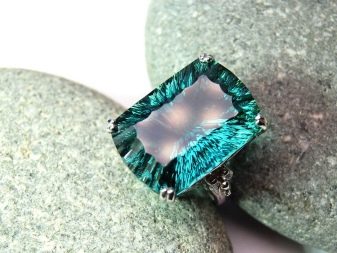
Chrysoberyl or Chrysopalus is a beryllium aluminate with impurities of iron, chromium and titanium. Mineral is quite rare. Its transparent varieties, despite the rarity, do not belong to the category of expensive stones, which does not prevent them from being beautiful and durable. The most valuable specimens with a pronounced internal iridescent effect are processed in the form of a cat's eye cabochon. And the original large crystals are of great value to collectors.
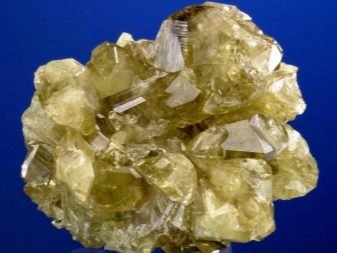

Alexandrite famous for double color. The color of the mineral ranges from dark blue-green to green with an olive hue. This color is typical for stone in the daytime, and with the onset of dusk, alexandrite acquires various shades of red-violet. This effect is achieved due to the features of the crystal lattice.
Instances capable of opalescent in the dark like the eyes of a cat are called “cymophans”.
In Russia, alexandrite is considered a widow's stone. It is not recommended to wear any one jewelry with it, it is necessary to wear a second pair with it with the same stone. For example, earrings and a ring. After the death of Alexander II, it became fashionable to wear jewelry with alexandrite surrounded by two diamonds, symbolizing two significant deeds in the life of the emperor.
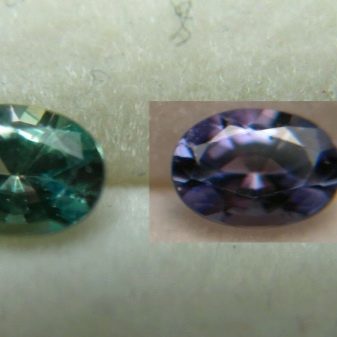
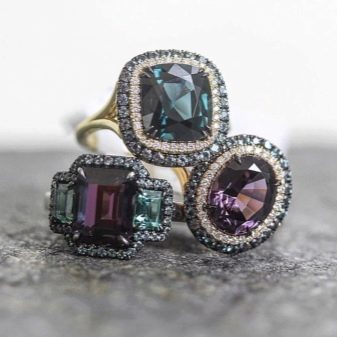
Demantoid, a kind of andradite from a series of garnets, is similar in appearance to diamond, only green. Impurities of chromium and iron are responsible for the color of the mineral, and titanium compounds give the yellow-green tint to the stone. The mineral is very rare, with a play of light in the facets it surpasses even a diamond.
Specimens are especially appreciated, interspersed with bissolith, called "ponytail", giving the stone additional beauty and uniqueness. This feature boasts stones mined in the Ural deposits.
There are minerals that exhibit the effect of “cat's eye” and give golden sparks in the play of light.

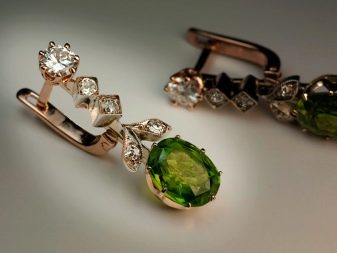
Bright green tsavorite, first discovered in the late 70s of the last century in northeast Tanzania, is a rare type of pomegranate. Vanadium owes its color to the color, and the emerald green stone is obtained from an impurity of chromium.
Due to its transparency and beautiful color, the tsavorite belongs to precious cut stones and has a rather high price due to its rarity.
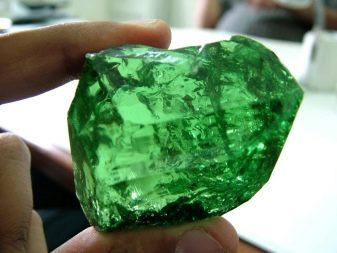

Greenish Topaz - one of the rarest stones. The color of a transparent stone is ensured by a defect (atomic vacancy) of the structure. Two-color crystals with zones of blue and yellow after processing become beautiful green and are appreciated quite high.

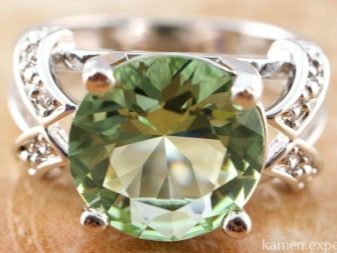
Green transparent bright colored noble spinel also refers to the category of precious stones.Octahedral crystals have a very high hardness and are used as jewelry.
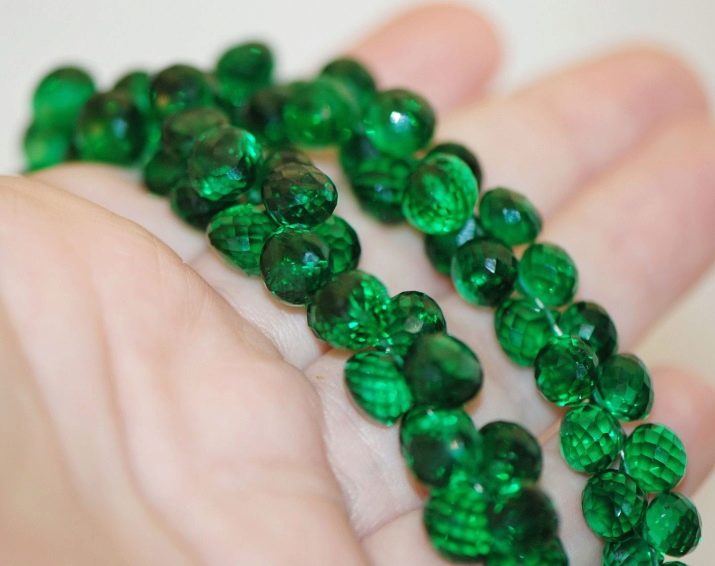
Gemstones also include transparent corundum crystals, a green variety of which in ancient times was called the "eastern emerald."
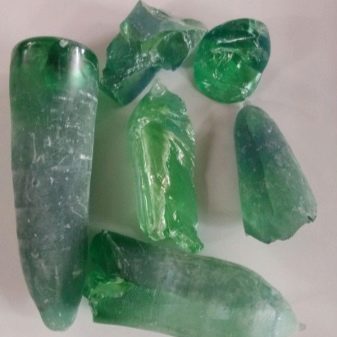
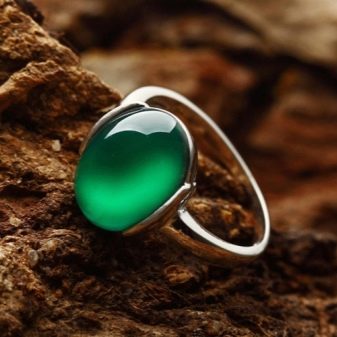
Semiprecious Minerals
In the world classification, the concept of semiprecious stones is absent, but in Russia minerals are called so, which, depending on the quality, can be attributed to non-precious or ornamental gems.
Chrysolite, one of 7 historical stones, has the same centuries-old history as the emerald. One of the oldest names for the stone is “evening emerald”, because by candlelight its green glow is most noticeable. Chrysolites were used to decorate the clothes of the high priest, there are references to it in the Bible, and John the Theologian in the Apocalypse says that the mineral adorns the seventh base of Heavenly Jerusalem.
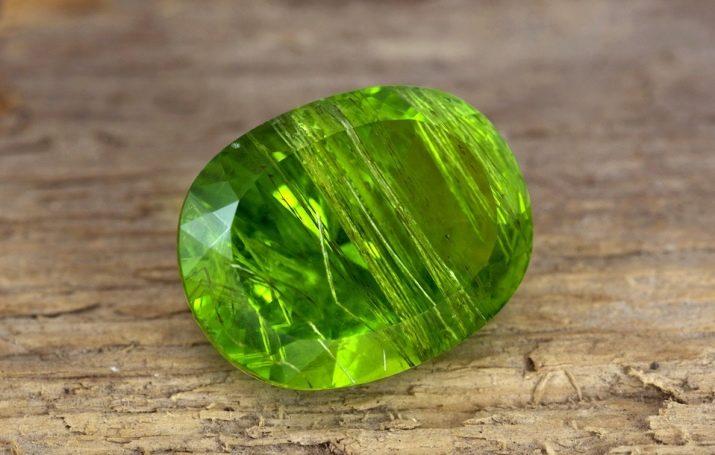
Hawaii, also one of the precious varieties of olivine, a native of the lava of the volcanoes of the Hawaiian Islands, unlike chrysolite, has a pale green color and is not known as widely as its relative. Olivine itself is too fragile and is more often found in the form of sand. Its distribution is so great that it is found even in the composition of the lunar soil.
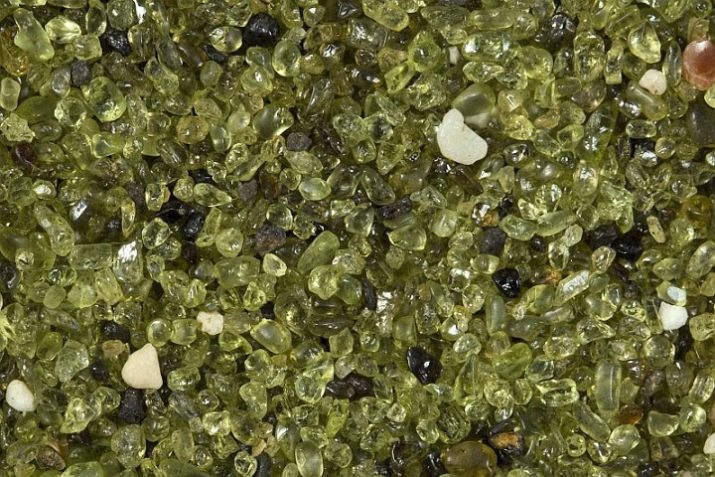
Boil and grossular are green varieties of pomegranate. Emerald green will boil, named after the President of the Russian Academy of Sciences, Count S. S. Uvarov, highly regarded by collectors for its beauty and rarity. In jewelry, plates with a brush of small crystals are used. It will be popularly called ural emerald because of the similarity of color with a precious stone.
Due to its bright green tint, it will boil due to the presence of chromium.
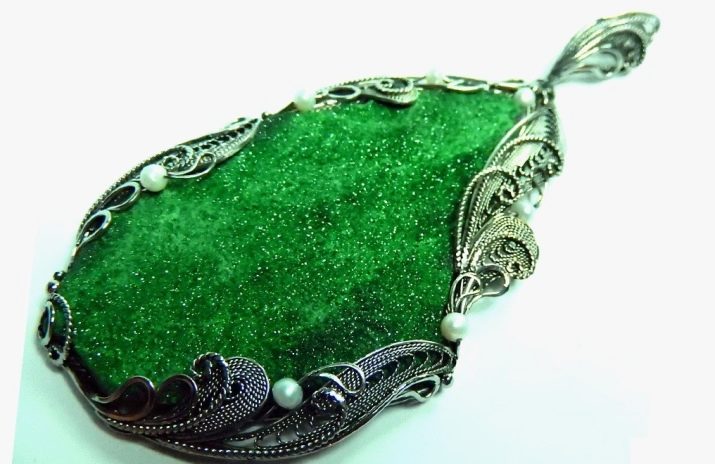
Grossular named for its resemblance to the fruits of green gooseberries. The color of the crystals ranges from colorless, golden yellow, brown to green. A bright green version of the grossular is called the tsavorite - in honor of the area where it was first discovered. The natural grossular is cloudy, and the transparency and luster characteristic of quality specimens are achieved by processing.
Homogeneity of color also belongs to one of the main requirements for high-quality jewelry stone.

Onion Green Prasiolite often used as a cheap substitute for expensive crystals, reminiscent of the appearance of beryl, tourmaline and peridot. Natural stone has a light color and is quite rare. The saturation of the color indicates that the mineral is obtained by heating and irradiating amethyst.
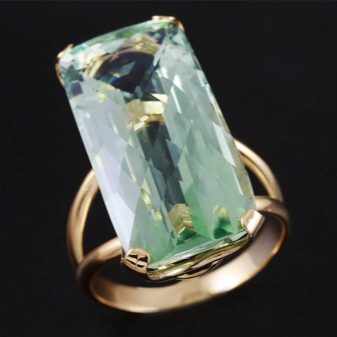
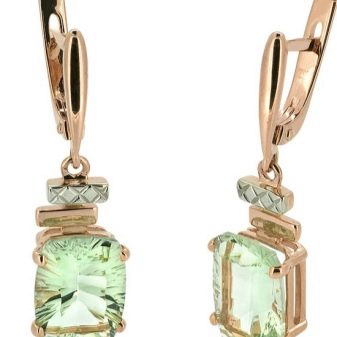
Some varieties of tourmaline are green:
- Verdelite has a moderate green color;
- watermelon has a two-tone red-green color.
Transparent high-quality crystals can be classified as precious stones. Their faceted variations are used for jewelry. Crystals of lower quality are used as an ornamental stone.
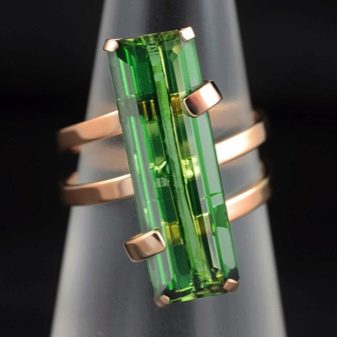
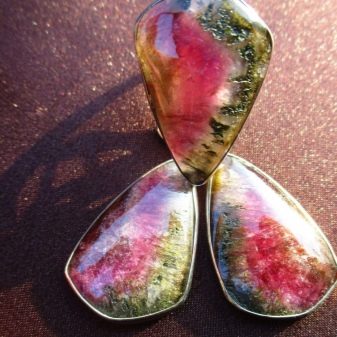
Chromdiopside is an emerald-colored stone. This is a very fragile and moody mineral in processing, which is the rarest and most valuable variety of diopside. Only small crystals are subject to cutting; larger stones are used as ornamental.
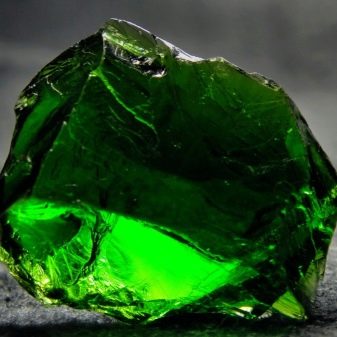
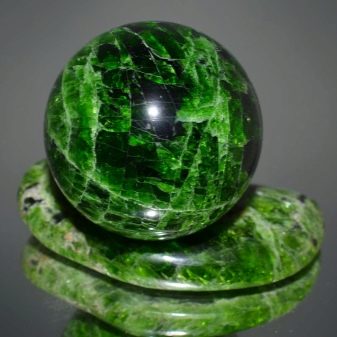
Dioptase is a transparent transparent green mineral, which is quite rare. In jewelry, it is used as inserts of raw crystals for exclusive products. It is difficult to process, as it is very fragile. More often, ore with dioptase crystals can be found in private collections and museums, since in appearance they look very attractive.
Powdered stone is used as a coloring pigment for writing icons.
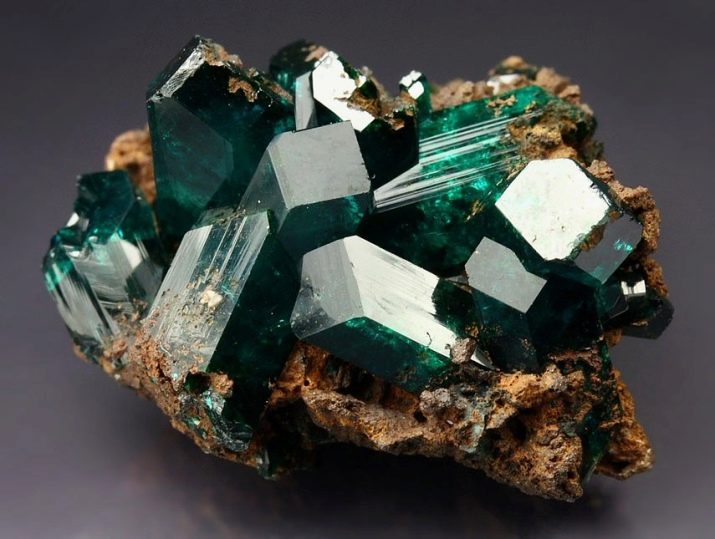
Chrysoprase refers to semiprecious and ornamental stones. Its light green color can vary from apple to grassy and bluish green. Three categories of jewelry chrysoprase are distinguished.
- Top grade used as a gemstone, it is transparent to a depth of 50 mm. Its evenly colored, intense emerald-colored plates may have small inclusions in depth.
- First grade it is visible to a depth of no more than 20 mm and has a lighter uniform color. But whitish and opaque areas can be found.
- Second grade refers to ornamental stones. The bluish-green color of the mineral can alternate with whitish and yellow-green stripes, alternating transparent and cloudy layers, forming an uneven pattern.
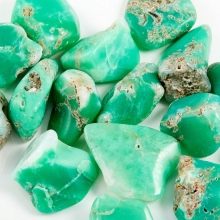
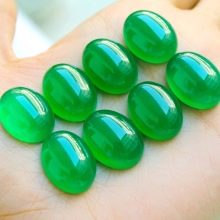
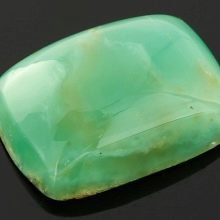
Discovered in the Czech Republic moldavite refers to quartz. Judging by the structure, the stone is a transparent natural glass and has a bottle-green color. It is assumed that the stone is of foreign origin or was the result of a meteorite impact on the ground.
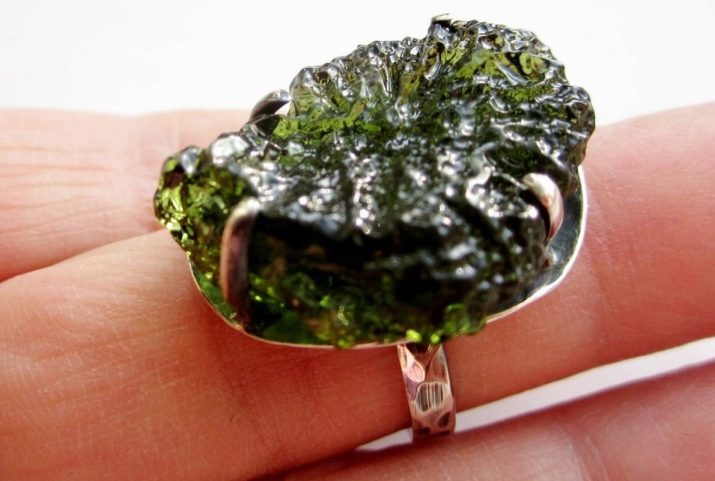
Ornamental
Most often, you can find ornamental types of stones. These are muddy or completely opaque minerals used for the manufacture of various objects - from jewelry to monuments.
The most famous among ornamental stones is a green gem from the Urals - malachite. A stone composed of copper oxide, carbon dioxide and water since Ancient Egypt was the basis for the extraction of copper, but later people appreciated the velvety beauty of dense varieties of stones, giving a beautiful pattern on the cut, consisting of rings formed during the formation of layers of the mineral. Since the end of the XVIII century, when copper deposits were discovered in the Urals, malachite began to be used as an ornamental stone for facing various surfaces, as well as for the manufacture of decor and household items.

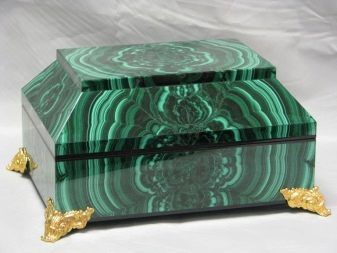
Serpentine, or serpentine named after its characteristic coloration: on the surface of the stone, whose color varies from yellow-green to dark, almost black, stains are visible from interspersed with other minerals of different colors resembling snake scales. The evenly colored, sometimes translucent variety of the coil is called noble serpentine and is used as a raw material for the manufacture of various crafts.
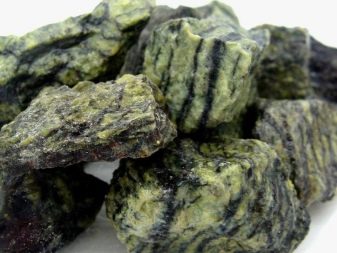
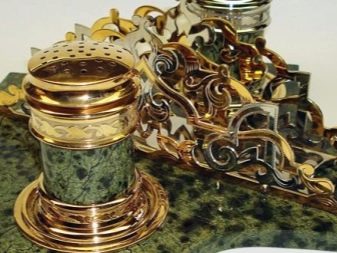
Jasper - semiprecious ornamental mineral having a sedimentary origin. This rock (in Greek, “speckled stone”) got its name because of the many different colors with impregnations that give an uneven color. Solid jasper stones in nature are a rarity. Green jasper can have such trade names as:
- plasma - dark greens with small granular impregnations;
- prase - green drain quartz, ornamental stone.
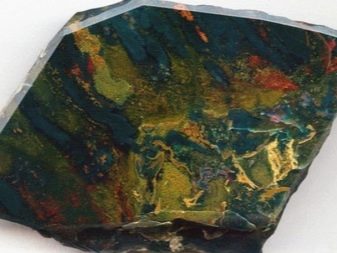
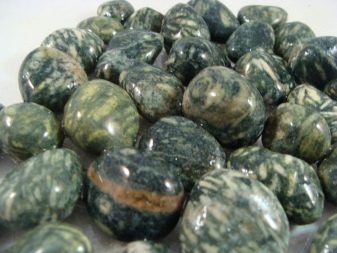
Heliotrope, or "bloody jasper" - ornamental stone of dark green color with red spots and veins. The mineral belongs to the quartz group, but is completely opaque. Inserts from this stone are used in men's rings, in the manufacture of cameos.
The heliotrope is sewn on the vestments of priests and is used for church utensils, since it is believed that the red streaks on the stone are caused by the blood of Christ.
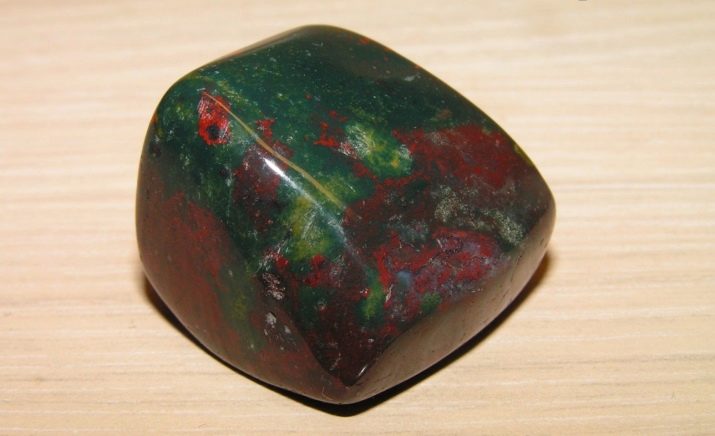
Chrysopalus is a green variety of opal. Nickel admixture gives coloring to the stone. Depending on the amount of impurity, chrysopal has various shades of apple-green color. Used to make inexpensive jewelry.
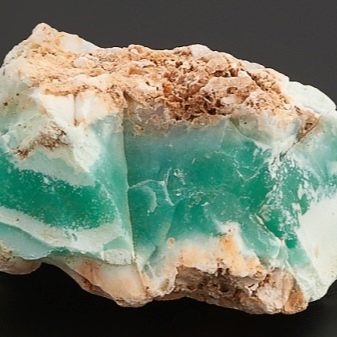
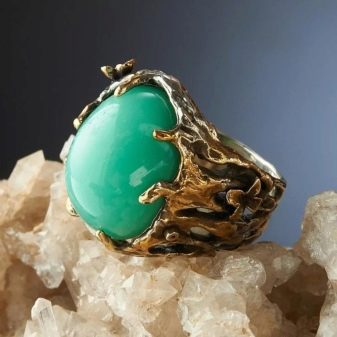
Amazonite - A beautiful blue-green variety of feldspar. Due to the germination of quartz crystals in it, a peculiar pattern is formed on the cut, resembling the letters of distant ancestors. Rare crystals of amazonite are very appreciated by collectors, but in general, the stone is used for the manufacture of various crafts as an inexpensive ornamental mineral.
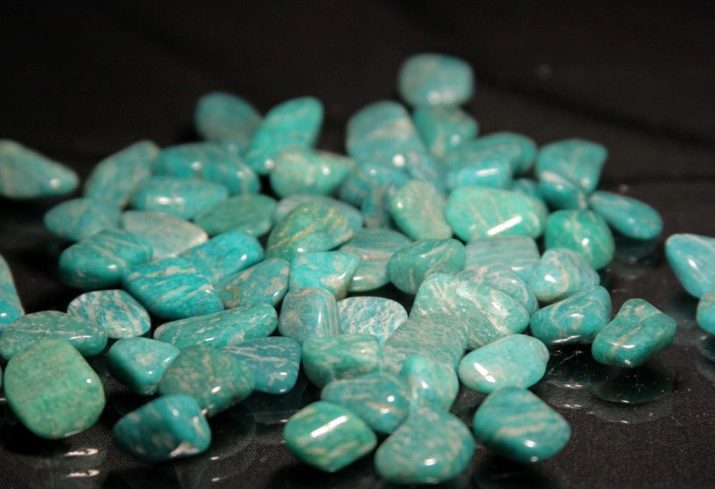
Nephritis known to man since ancient times, but he gained the greatest popularity in China, becoming his national symbol. All shades of green - from almost white to brown, are found in a rich palette of stones. There are also the rarest colors of white, gray, bluish and red jade.The most valuable instances of jade have a uniform uniform color, stones with stripes, spots or clouds of stains are much less valuable.
Jade is used to make amulets, jewelry, household items and statues.
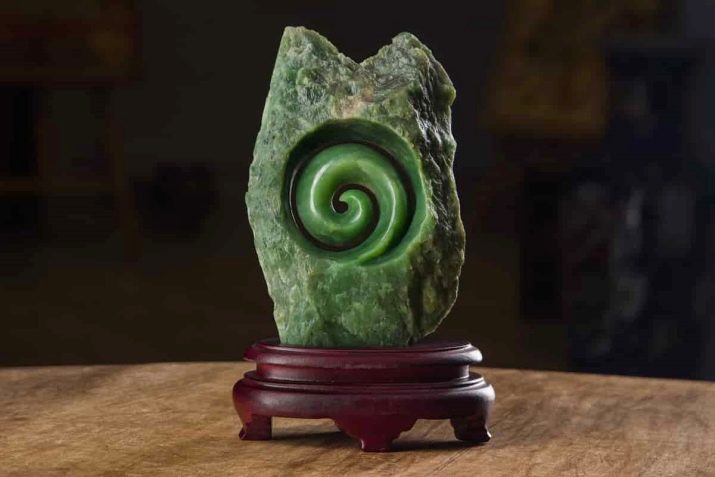
Jade looks like jade, but has a higher jewelry value. There are stones that have green from light to dark, gray-green, white. There are rare varieties of black, brown, blue, violet, pink and yellow jadeite. The most valuable grade of jadeite is called "imperial". It has a uniform dark green color of transparent or translucent crystals. Jadeite, which is harder than jade, is used to make various decorations and home crafts.
Large stones of lower quality jadeite are used to fill the stoves in baths, as it can withstand high temperatures and does not react with water.
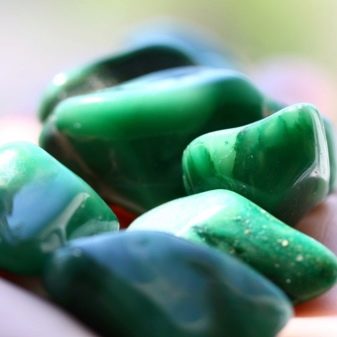
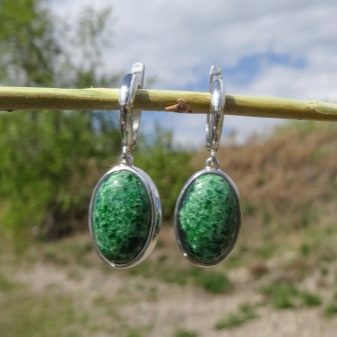
Variscitis bearing the name of the Varicius region in Saxony, where it was first discovered at the end of the 19th century, can be confused with turquoise or chrysoraz. Variscite crystals are composed of aqueous aluminum phosphate with impurities of iron or arsenic. The color of the mineral ranges from yellowish green to green with a blue tint. Rounded crystals of variscite form brushes, occasionally drusen, can occur in the form of stalactites. After processing, they are used as jewelry.
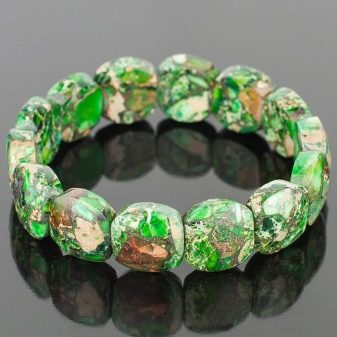
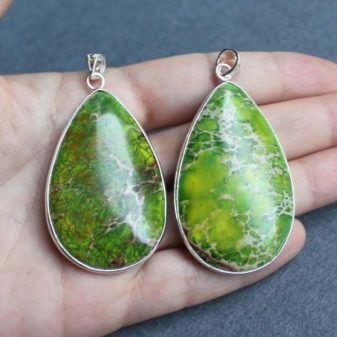
Who is it for?
Many of the stones are considered magical and are used as charms, talismans and amulets. If you look at the signs of the zodiac, then:
- Aries green diamond, demantoid, boil, emerald, turquoise, amazonite and lazurite of gray-green color will do;
- Taurus recommended amazonite, serpentine;
- Twins it is worth paying attention to alexandrite, beryl, malachite, nephrite, amazonite, chrysoprase and emerald;
- Raku emerald, tourmaline, beryl, chrysoberyl, aquamarine, chrysoprase, chrysolite, amazonite, jade and jadeite are needed;
- a lion may choose diamond, chrysolite, tourmaline, alexandrite, jadeite, jade, emerald or malachite;
- Virgo advised to wear aventurine, jade, chrysolite, jasper, jadeite, emerald, sapphire, tourmaline, topaz, alexandrite, beryl, boil and chrysoprase;
- Libra may have jewelry with aquamarine, diamond, aventurine, malachite, green jasper, chrysolite, beryl, topaz and chrysoprase;
- Scorpio astrologers advise aquamarine, turquoise, serpentine, tourmaline, cat's eye, alexandrite, beryl, chrysoprase;
- Sagittarius turquoise, chrysolite, aquamarine, emerald, tourmaline will do;
- Capricorn malachite, serpentine, heliotrope, chrysoprase, tourmaline, alexandrite and boil are needed;
- Aquarius you can use aquamarine, turquoise, jade, chrysoprase, chrysolite, amazonite, boil, tourmaline;
- Pisces Aquamarine, aventurine, emerald, heliotrope, chrysolite, alexandrite, chrysoprase, beryl, tourmaline and boil will help.

How to care?
In order for the stones to retain useful properties and not lose their attractive appearance, they need proper care.
Stones should be kept in places protected from direct sunlight, as some species tend to fade under the influence of the sun. Jewelry is best stored in caskets upholstered with a soft cloth to protect them from mechanical damage. And products with stones that have magical properties should be stored separately so that they do not affect each other with their energy.
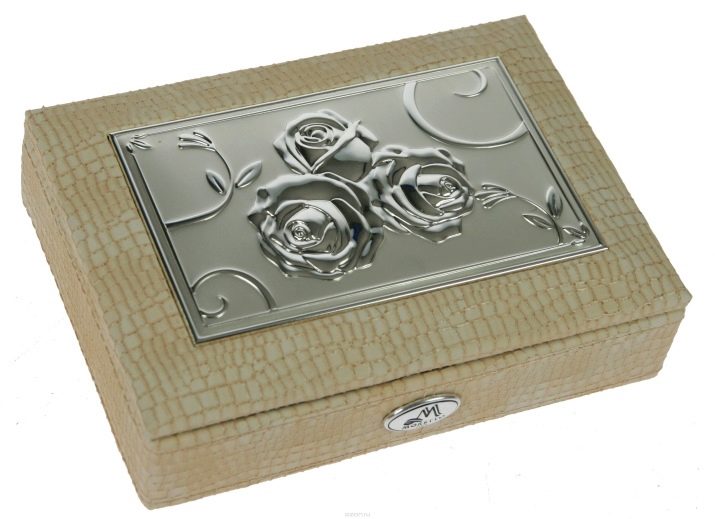
When cleaning products from contamination, it is not recommended to use abrasive and chemical cleaning agents, since some minerals can interact with them. For cleaning, it is best to soak the item in a solution of baby soap, rinse under running water and wipe it with a soft, lint-free cloth.
Layered soft stones can absorb odors and oils, so it is worth keeping products made from natural stones away from cosmetics and perfumes.
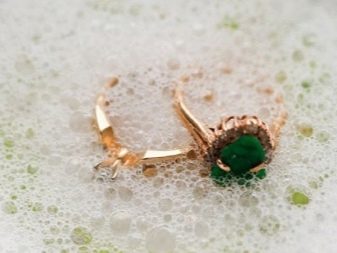

See the video below for more details on the properties of emeralds.










